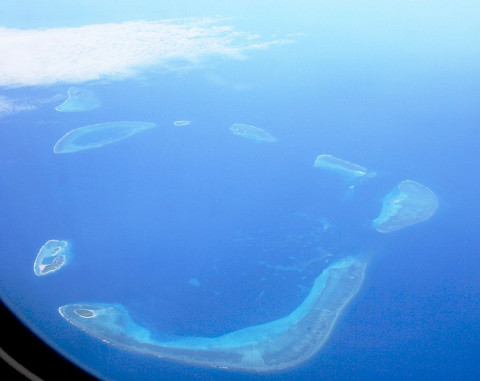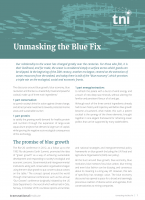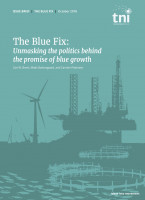The UNCLOS isn't perfect and it's time we acknowledge that
Exclusive Economic Zones have encouraged the process of privatising the seas, at the cost of protecting the oceanic environment.

Crescent_Group,_Paracel_Islands,_2007-08-11.jpg: Swaminathanderivative work: Teofilo / CC BY (https://creativecommons.org/licenses/by/2.0)
Fair enough, but interestingly, UNCLOS itself never receives any serious criticism from our realpolitikers when it certainly deserves this. It is important to understand not just its virtues but also its vices. This is what is attempted here.
From the 18th to the mid-20th century, respect for the principle of ‘freedom of the seas’ meant that the stretch of coastal waters said to belong to a state was three nautical miles or 5.6 kilometres. This was the norm set by the imperialist powers of the time such as the US, Britain, France and others, and was based on the maximum distance a cannon shot could travel from an offshore threat. After the Second World War, economic ambitions led many countries to extend their sovereign claims to 12 nautical miles, which by the 1960s was widely accepted as the new norm.
Even before this though, there were greedy exceptions. The first culprit (no surprise) was the US which in 1945 under President Harry Truman unilaterally declared as its territory all the sea areas corresponding to its extended continental shelf which was at least, if not more than, 200 nautical miles (370 km). Within the next couple of years a few other countries such as Argentina, Chile, Peru and Ecuador similarly extended their sovereign claims over sea waters, seabed and subsoil.
In the post-Second World War era, with decolonisation putting an end to older empire geographies and creating a huge number of new states thereby promoting much greater national competition for the resources of the seas and oceans as well as more maritime traffic, the most important negotiations for establishing an international Law of the Sea began in 1973. By this time, 25 countries were adhering to the three nautical miles limit, 66 countries to 12 miles and eight countries to at least 200 miles. These negotiations lasted for nine years culminating in UNCLOS in 1982 which came into force in 1994 when the 60th country, Guyana, ratified it.
What UNCLOS does
UNCLOS is almost universally lauded for laying down laws and rules whose wide acceptance it is believed has greatly reduced the number, frequency and potential for inter-state conflicts that would otherwise have taken place. There are now 167 member countries plus the European Union. But these gains have also come at an incalculable cost, now and in the future, which is simply not recognised let alone counted. But before we come to that let us see what it does.
- The 12-mile zone was legally sanctioned as the ‘territorial seas’ belonging to a specific coastal state but within which “innocent passage” of other ships including warships is allowed.
- Easily the single-most important new development ushered in by UNCLOS was the creation and legal sanctification of Exclusive Economic Zones (EEZs) of 200 nautical miles over which states have sovereign rights to explore and exploit in the seas, the seabed and subsoil.
- The area beyond the EEZs are demarcated as the “high seas” and said to be the “common heritage of humankind”. Here, the stipulated International Seabed Authority (ISA) finally came into existence in 1994 to regulate, organize and control through licences and contracts with companies and governments, all mining explorations to be followed later by actual operations in the international seabed.
- Key narrow straits crucial for shortening maritime routes have been given international status for “transit passage” but otherwise local coastal states have sovereign rights over them.
- It has established a dispute-settlement mechanism for member countries.
Problems and criticisms
The biggest beneficiaries of the introduction of EEZs are those countries with a huge coastline (Russia, Australia) and big archipelago island states (Indonesia, Japan), but above all the three premier colonial and imperialist powers of the 18th, 19th and early 20th centuries, namely the UK, France and then the US which through force conquered huge landmasses as well as scattered islands and long island chains establishing white settler regimes by massacring at least 80% of the indigenous non-white population. Besides the US itself, these are Australia, New Zealand, Canada and Brazil. The UK and France continue to retain many island groups.
- According to UNCLOS, uninhabited islands are also entitled to 200-mile EEZs. In terms of overseas areas in their possession, the top ten in order are France (11.7 million square kilometres), the US (11.4 million sq km), Australia (8.5 million), Russia (7.5 million), UK (6.8 million), Indonesia (6.2 million), Canada (5.6 million), Japan (4.5 million), New Zealand (4.1 million) and Brazil (3.8 million). For the US, France and the UK, their overseas areas exceed that of their own landmasses.
- The US has accepted the legal limit of 200 miles but nevertheless, unlike China, is not a member of UNCLOS. Membership requires the assent of a two-thirds majority in both houses which Republicans have so far prevented as there are strong voices which oppose any constraints on the US. For example, it can currently ignore the ISA when it comes to international seabed exploration and mining for commercial purposes. Given UNCLOS’s ruling against Chinese claims in the South China Sea, some American strategists feel US membership would materially strengthen the opposition to China pursuing its ambitions in this regard.
- New Zealand, with a population of around five million has 4.1 million sq km while China with a population of 1.3 billion has around 900,000 sq km. China’s Nine-Dash-Line is a demarcation that claims island groupings and thus more of the South China seas. Incidentally, this claim precedes the emergence of Communist China and continues to be held also by the current Taiwan regime. But after 1982 UNCLOS, the stakes in terms of areas to be acquired became much higher than ever before. This would now add a further two million sq km to China if conceded, which is still well short of New Zealand’s total. Of course the Nine-Dash-Line must not be accepted. But pointing the disparities between New Zealand and China is meant to highlight how the legacies of former colonial rule and aggrandisement continue to shape in highly iniquitous ways the current order; to which one can add the iniquity that has emerged from sanctioning the principle of EEZs themselves.
- The establishment of such EEZs was effectively the inauguration of a process of substantial privatisation-nationalisation to shrink what has been called the “global commons”. As such, it is in keeping with the growing dominance of neoliberal capitalist thinking among the ruling classes of different nation-states even if the most powerful states and those aspiring to join the ‘Big Boys Club’ hold the biggest share of responsibility for having produced and endorsed this outcome. Before 1982 sovereign rights were over a 12-mile zone. After UNCLOS, some 36% of the world’s waters (by surface area, not volume) have been excluded from the “common heritage of humankind”.
- The current “high seas” cover 64% area wise and volume wise amount to over 90%. But the workings of ocean currents lead to huge concentrations of phytoplankton – the crucial base of the fisheries food chain – being disproportionately deposited within EEZs so that 87 coastal states control over 95% of the world’s fisheries and because of over-fishing, replenishment rates are seriously threatened. The world high water mark for fish catch, never since repeated, was 90 million metric tonnes in 1989 with subsequent catches stagnant or declining. So much so, that at current rates it is estimated that that all the world’s fisheries can collapse by 2050 or even earlier as ocean acidification and habitat destruction are also taking their toll. Predatory fishing by the more powerful fishing companies of the richer and more prosperous states is a fact. Also 87% of known and estimated hydrocarbon reserves and many mineral deposits are to be found among EEZs.
- When EEZs overlap it is left to the two countries involved to sort matters out. The region of greatest tension among neighbouring countries caused by such overlaps, by economic ambitions, by political tensions and above all by the geopolitical face-off between the US and China (which includes military preparations) is the Asia Pacific.
- There is no proper Global Ocean Treaty that aims to seriously protect the “common heritage” of the High Seas. The ISA is more concerned to promote the eventual extraction of poly-metallic nodules containing valued mineral accretions from the seabed than with protecting the environment. No licence for exploratory mining has been turned down. Environmental Impact Assessments are done by the contracting company and are not independently verified. The ISA is dismissive of the concerns of environmental organisations like Greenpeace about protecting the seabed from such future mining or from the various powerfully negative environmental side effects that would be involved such as noxious plumes, noise and light pollution. Insofar as there are moves towards a Global Ocean Treaty, the ISA is not alone in wanting a soft treaty that gives priority to economic exploitation over environment concerns.
Summing up
The engine that keeps capitalist development running is the constant pursuit of profit, which necessarily requires the constant pursuit of economic growth through cumulative exploitation of resources; and that too within a framework of multiple nation-states where the strongest and most powerful want to set the rules of international order and management as much as possible in their own favour.
The sane alternative, for example, in the Asia Pacific (and elsewhere) would be the setting up of a genuinely impartial regional body whose number one priority would be the protection of the oceanic environment; the imposition of the most severe limits on the exploitation of the wealth of the seas and oceans; widening the domain of the “common heritage of humankind” by retracting these EEZs; and organising the distribution of whatever level of resource extraction that is allowed in the “global commons”, in proportion to the respective population sizes of the countries concerned.
Of course this is not going to happen. Instead, the process of privatising the seas via UNCLOS has been joined by the process of privatising the atmosphere through pollution permits and carbon trading. Outer Space in military and nuclear terms has for some time now already been privatised for the so-called security of some countries. We are not just going to cross the ‘two degree’ climate change barrier but are well on the way to racing beyond it, while other forms of grave ecological despoliation on land and on the seas are also guaranteed. Future generations will not forgive us for failing to sufficiently protect and preserve our global commons.
Achin Vanaik is a writer and social activist, a former professor at the University of Delhi and Delhi-based Fellow of the Transnational Institute, Amsterdam. He is the author of The Painful Transition: Bourgeois Democracy in India and The Rise of Hindu Authoritarianism.


